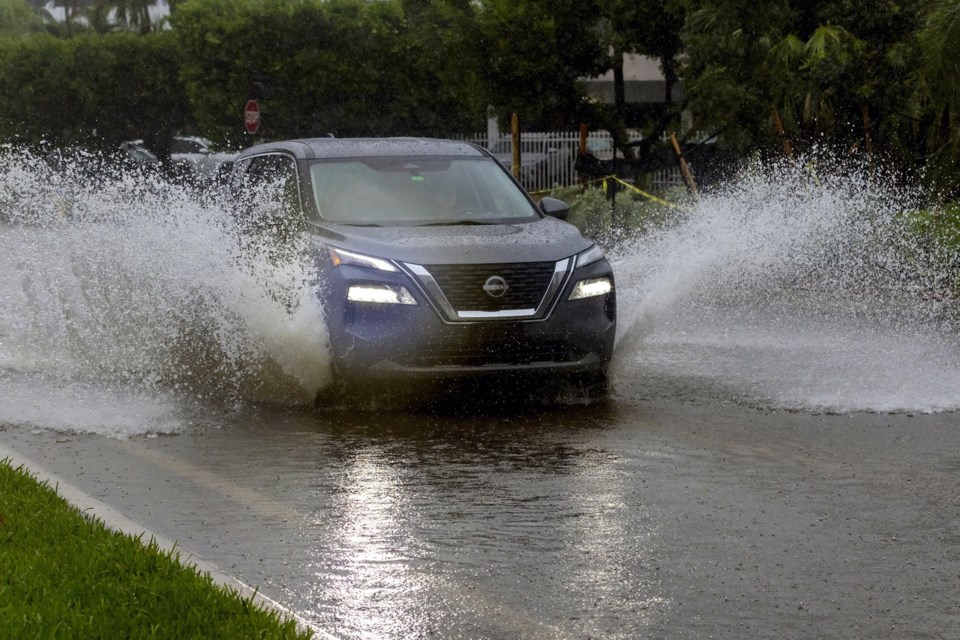WEST PALM BEACH, Fla. (AP) — is upon us, known for disastrous flooding and high-speed winds in coastal areas of the United States and in the Caribbean and Central America, and emergency management officials are urging people to .
Unlike previous hurricane seasons, this summer brings record hot temperatures nationwide and an early onset of storms. Hurricane season runs June 1 to Nov. 30, but usually the most hurricanes occur in September and October, said Jaime Hernandez, the emergency management director for Hollywood, on Florida's Atlantic Coast.
“That’s a little bit different this year because of the reality we’re dealing with with global warming, warmer sea surface temperatures, atmosphere conditions that are more favorable to tropical cyclone development,” Hernandez said. “It could develop at any time.”
Since the start of this week, broke records as the first Category 4 storm to form in the Atlantic Ocean in June — abnormally early compared to past trends.
Here's how to prepare, what to have on hand, and who should evacuate in a hurricane:
How do I make sure I'm prepared?
Hernandez said his emergency team encourages people to do three key things: make a plan, have an emergency kit and stay informed.
“We trust the people particularly, especially those who live in an evacuation zone, that they need to have a plan because of if an evacuation order is issued ahead of the hurricane," Hernandez said. "You don’t know what the impacts are going to be. You don’t know what the infrastructure disruptions are going to look like.”
Preparing for a hurricane includes getting supplies in advance, including nonperishable foods and water in case power is lost and supplies are low in the community.
Preparedness also includes ensuring all medical items and medications are ready in case people are unable to leave their homes. In this case, it's important to consult a doctor about what to have ready in your home.
Hernandez directed people to look at checklists provided by local or state emergency management departments to ensure they are prepared.
What are some emergency kit necessities?
The rule of thumb is to have 1 gallon (3.8 liters) of water per day per person for about seven days, Hernandez said.
In addition, supplies on hand should include nonperishable foods, flashlights, batteries, medications and medical items, sunscreen, mosquito repellent and portable power banks. It's also a good idea to have cash on hand since ATMs may not be working.
Also keep documents such as birth certificates, Social Security cards and other important papers in a go-bag in case you have to leave your home quickly, Hernandez said.
What about vehicles?
It's always wise to fill up all of your vehicles in case evacuations are ordered.
Hernandez noted that it's also important to think ahead if you have an electric car by parking it in an elevated location or away from the storm area until it is over, since he said electric cars could struggle with flooding and storm surges.
About 20 electric vehicles caught fire after exposure to saltwater from Hurricane Ian. Florida's Hillsborough County has a for electric vehicle owners, which encourage residents to park the vehicle about 50 feet (15 meters) away from any structure or vehicle due to fire risk.
Who should evacuate ahead of a storm?
People who live in low-lying or flood-prone areas should plan on evacuating prior to the storm's arrival. Sometimes officials advise just heading a few miles inland to stay with friends or family or in a hotel or shelter. In any case, officials advise residents listen to their local emergency management officials, who will have the most updated information about evacuation zones.
Evacuation orders may come before a hurricane, and officials will inform residents if they live in an evacuation zone. These orders can come days or hours before a storm.
Where can I find preparation guides?
Visit your local or state emergency management office's website for guides on disaster planning.
Florida residents can find this information at the state’s .
Stephany Matat, The Associated Press




